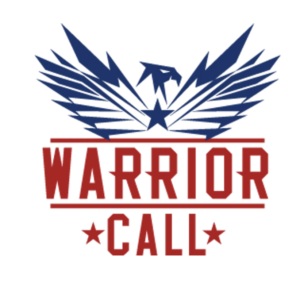A bipartisan group of lawmakers and more than 20 think tanks across the country have joined the cause of declaring the Sunday after Veterans Day “National Warrior Call Day.” But for Frank Larkin, it is more than a cause. It’s personal.
Larkin’s son Ryan was a highly decorated Navy SEAL operator who saw combat in Afghanistan, Iraq, and Lebanon. According to Larkin, his first indication of issues was his son’s nightmares and trouble sleeping. He quickly unraveled. Over two years of seeking help, Ryan was prescribed over 40 medications, everything from over-the-counter creams to mood stabilizers. Larkin recalls his son saying he felt like he wasn’t in his own body.
“That’s a common theme you hear from these veterans,” Larkin said. “Physicians are so quick to pick up the prescription pad as opposed to trying to peel back the onion and find out what’s the root cause.”
In Ryan’s case, he suffered from a severe level of microscopic brain injury—undetectable by a PET scan or MRI—uniquely related to blast exposures. As a Navy SEAL, he was constantly subjected to blast pressures. Each exposure was destroying more and more of his brain. Ryan’s diagnosis of a traumatic brain injury came after he committed suicide in 2017. He was 29 years old.
Today, Larkin is chairman of the Troops First Foundation which is promoting the Warrior Call Day cause. The initiative encourages every American to make a phone call to a veteran or serviceman suffering from the effects of war such as post-traumatic stress disorder and traumatic brain injury.
“These invisible wounds are not easy to understand,” Larkin said. “It’s one thing when you look at someone that’s been disfigured or suffers from burns, or lost a limb, which is all very serious in itself, but you can visually see they are injured. It’s when you look at someone else that looks perfectly normal, but they might actually be in worse shape because of how broken they are on the inside.”
The suicide rate in 2019 among veterans was 52.3 percent higher than civilians, according to a VA report. 20 percent of veterans that served in Afghanistan or Iraq suffer from major depression or post-traumatic disorder, according to a RAND study.
In the middle of July, the Department of Veterans Affairs changed its Veteran Crisis Hotline to 988. With that change in number, the VA increased staffing by 50 percent in anticipation of higher call volumes.
Researchers from the Department of Veterans Affairs, identified social isolation as the strongest and most reliable predictor of suicidal ideation. Up to two-thirds of veterans who take their own lives had no contact with the Department of Veterans Affairs. Through the Warrior Call Initiative, Larkin said they are trying to connect the disconnected.
“Many of these veterans and some of the active duty have unfortunately become distrustful of the system that is trying to help them,” Larkin said. “Whether it’s VA services or services within the military, they don’t feel like they have an environment where they can stand up and ask for help.”
A growing body of research points to the correlation that exists between blast exposures and traumatic brain injuries. Now, the Department of Defense is funding an $8 million research project in preventing traumatic brain injuries in blast exposures and treatment options for traumatic brain injury.
“We just don’t have the diagnostics where they need to be right to completely qualify a diagnosis,” Larkin said. “The tragedy is if we’re getting it wrong because we don’t have the right diagnosis then we’re taking people down the wrong path. It might be a contributing factor to some of the suicides.”
According to Larkin, the research and science of those invisible wounds is just part of the solution. Addressing veterans and servicemen living in isolation — particularly through a phone call —is crucial.
The resolution for the Sunday following Veterans Day National Warrior Call Day was first introduced last year in the House by Rep. Liz Cheney (R-Wyo.). Sens. Jeanne Shaheen (D- N.H.), and Tom Cotton (R-Ark.) are leading the movement to pass the resolution in time before Veterans Day this year.
“We all have phones now,” Larkin said. “It’s just simply calling somebody, and you don’t need it to be complicated. It just needs to be a simple, ‘Hey hello, I was thinking about you.”
Please follow DVJournal on social media: Twitter@DVJournal or Facebook.com/DelawareValleyJourn


